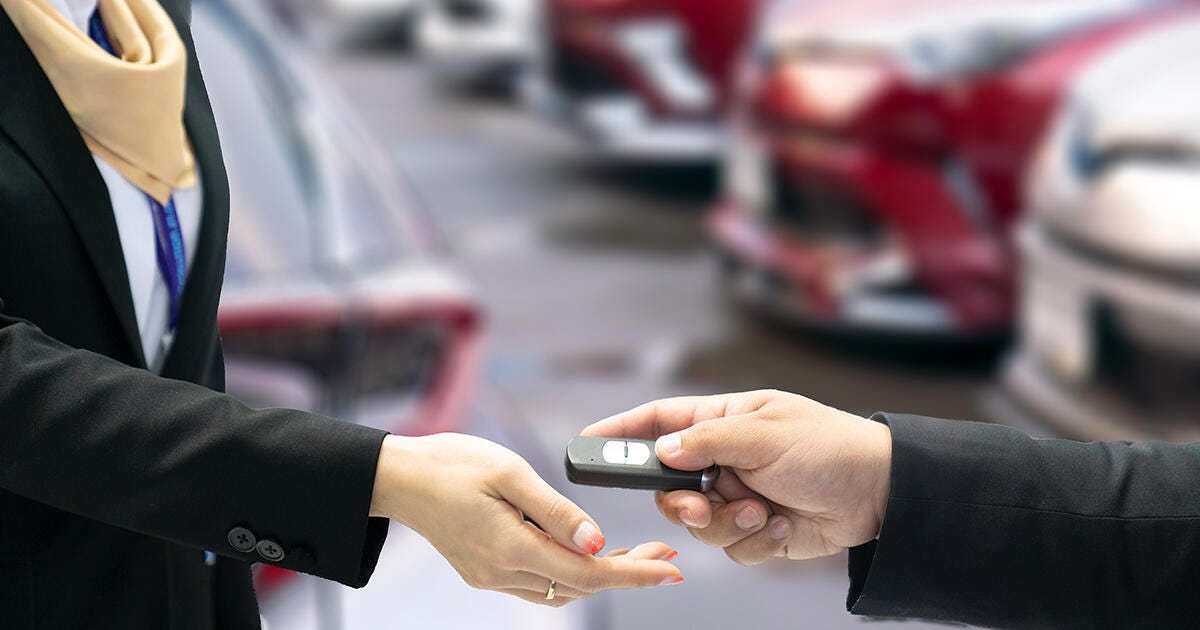
Will you preorder your next car online, and maybe even buy it fully digitally?
Caiaimage/Martin BarraudFor decades, American car sales have followed a script: Hopeful buyers head to their local dealership, stroll the aisles and aisles of shiny new sheetmetal, test-drive a couple of models, sign on the dotted line and drive home in their new vehicle. But that process is changing, according to a new study from Cars.com. Today, fully 41% of survey respondents say they plan to preorder their next vehicle. And among the 16% of shoppers questioned who actually already preordered a new vehicle, 98% enjoyed the experience and said they’d do so again.
The study suggests that the reasons for this go beyond inventory shortages wrought by the COVID-19 pandemic and supplier issues that include the semiconductor production crisis. Cars.com says “work-from-anywhere culture” and innovations in car-shopping technology — especially online purchasing are is leading this change in buying behavior. Automakers are making it easier to spec, order and purchase vehicles digitally using more sophisticated websites and product configurators, and dealers are adapting friendlier remote purchase and service policies to make things easier.
Automakers like Tesla have been relying on the online preorder system for years, normalizing wait times that stretch into to the weeks and months (and in the case of the Roadster, Semi and Cybertruck, years). More recently, car companies like Ford and General Motors have found substantial success by establishing early deposit-based reservation products for new models like the Bronco, F-150 Lightning and GMC Hummer EV, building buzz and generating millions of dollars in refundable deposits.
With new-car shoppers now routinely forced to wait weeks or months due to inventory shortages, and with deals and incentives in commensurately short supply, buyers have fewer reasons to pick from dealer stock when they can simply order exactly what they want while waiting a similar amount of time and paying a similar amount of money for a vehicle that’s on a dealer’s lot.
After decades of limited innovation in the car-buying process, automakers and franchise dealerships are showing newfound willingness to adapt to rapidly evolving consumer tastes. While some car companies have been reluctant to make vehicle purchasing available online, that’s changing, as a large number of consumers are clearly interested in transacting from home or wherever they happen to be. Of the 1,002 respondents to the survey, Cars.com says, “38% of current car shoppers expect to complete the entire buying process online, with another 38% intending to purchase a vehicle in person but complete all paperwork online.”
It’s important to note that Cars.com has a vested interest in these trends, as the company’s business model depends in part on funneling individual shoppers to dealerships. However, that doesn’t invalidate these findings, and if such buying-habit changes continue to play out over the long term, they will very likely impact the way car dealers look in the future. Nearly every automaker’s sales network comprises showrooms that are owned and operated by individual franchisees, and one of the biggest expenses for those individuals is the cost of maintaining inventory. As more customers move to preorder to get exactly the vehicles they want, it follows that dealers won’t need to stock as many new vehicles or have new-car lots that are as large as they are today.
The pandemic is helping change new-car shopping habits, likely for good.
Bridget Carey/CNETA side effect of all this is that vehicle paint colors and option choices found on the American road could eventually become more varied and interesting. Today, franchise dealerships typically try to limit their stock to popular models and trim configurations in inoffensive colors to broaden their appeal to as many potential buyers as possible. Doing so decreases the likelihood that dealers are willing to stock bolder “trend” paint colors or limited-popularity items like manual transmissions because they sit on their lots for longer periods of time, eating into their profits.
While this move toward customer preordering is relatively new in the US, the car buying process has been operating similarly in other parts of the world for decades — especially countries where showrooms and sales lots have to be very small due to geographical or cost reasons. It’s typical for European and Japanese buyers to go into dealers and preorder their next vehicle after only seeing a handful of models displayed at a dealership. It’s unlikely that America’s car-buying landscape will completely follow suit, but it’s increasingly likely that you or someone you know will order their next car purchase it fully digitally, and only set foot in a showroom to pick it up.

